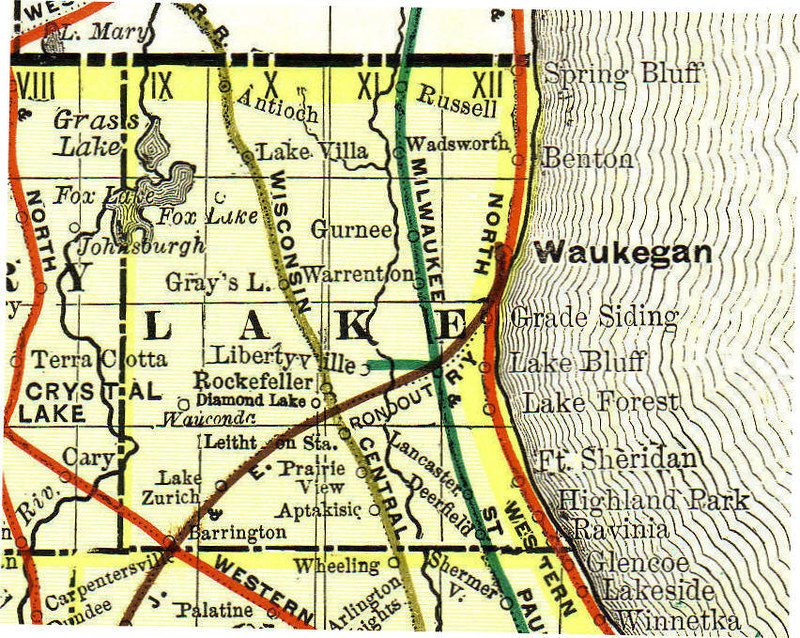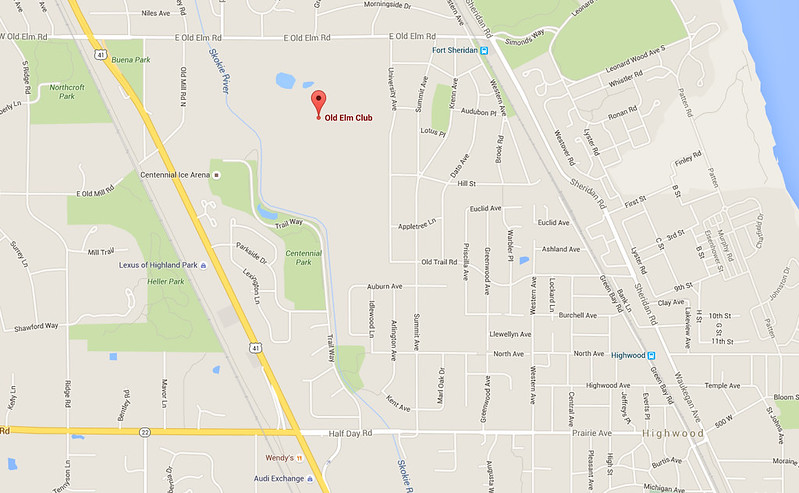Some more random information on Old Elm and John Eliot Warner and the letter.
First, here's an 1892 Railroad map that shows Ft Sheridan station, so the station must have preceded the letter.

In my search for John Eliot Warner, I could find only two John E Warners in Chicago in the 1900 census. Neither sounded like they would have been a prospective member of a course for the rich elite of Chicago given their jobs and neighborhoods.
As others have noted there was no North Michigan Ave before 1920. There was no 540 Michigan Ave in the 1900 Census - in fact no addresses on Michigan between the 300's and the 1200's. Perhaps the 540 address was from some time after 1920 and was a business address and not a home address.
I did find many of the social column references to a Mrs John Eliot Warner in the late '30's and '40's. They sounded like they might be from the right crowd for Old Elm. One reference had them throwing a party for 100 people at their home in Winnetka, so maybe they never lived in Chicago. Winnetka sounds like a moneyed area.
I found another reference to a John Eliot Warner being a director of the Lake Geneva Country Club in 1946. That club seemed/seems to cater to the wealthy of Chicago in the summer. Following is the article from the 50th anniversary celebration in 1946 that mentions Warner. There's an interesting mention of Charles Blair Macdonald near the end. Perhaps Old Elm was soliciting Warner and he chose to go to Lake Geneva instead.

Regarding the Green Bay Road on the blueprint, I couldn't find a historical map of the area with street names on it. Here is a 1907 topo map that's sized to overlay on the current map. The configuration of the roads is obviosly different, although what is now Old Elm ran at least to the current clubhouse. Searching other historical maps of the adjoining areas, with street names, I couldn't come up with any Green Bay Roads. Sheridan existed back the as did many of the cross streets. The main north south route was called either Waukegan Road or Chicago-Milwaukee Road or Railway Road.

